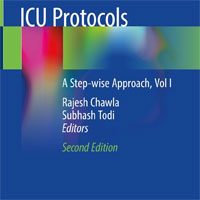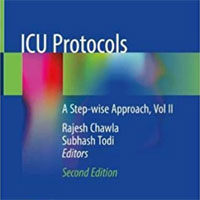Tag: inflammation
Effect of Early vs Delayed Initiation of RRT on Mortality in Critically Ill Patients With AKI
Among critically ill patients with Acute Kidney Injury (AKI), early Renal Replacement Therapy (RRT) compared with delayed initiation of RRT reduced mortality over the first 90 days. Further multicenter trials of this intervention... read more
Predicting the Requirement for RRT in Intensive Care Patients with Sepsis
Sepsis is one of the most frequent causes of acute kidney injury (AKI) in critically ill patients, with initial organ impairment often followed by dysfunction in other systems. Renal dysfunction may therefore represent one... read more
S1PR2 deficiency decreased macrophage pyroptosis and improved survival in E. coli sepsis
Sphingosine-1-phosphate receptor 2 (S1PR2) deficiency decreased macrophage pyroptosis and improved survival in E. coli sepsis. These beneficial effects were attributed to the decreased caspase-11 activation of S1PR2-deficient... read more
Initial Inflammatory Profile in Community-acquired Pneumonia Depends on Time since Onset of Symptoms
Time since symptom onset modifies the systemic inflammatory profile at Community-acquired Pneumonia (CAP) diagnosis. This information has relevant clinical implications for management, and it should be taken into account... read more
Increased Early Systemic Inflammation in ICU-Acquired Weakness
The main objective is to investigate whether patients who develop ICU-acquired weakness have a different pattern of systemic inflammatory markers compared with critically ill patients who do not develop ICU-acquired weakness.... read more
Music Helps Prevent Delirium in Elderly Critical Care Patients
A randomized controlled trial demonstrates that music intervention to prevent delirium among older patients is one of few strategies that provide support in a critical care setting. This study builds on non-pharmacologic... read more
Natriuretic Peptides: A Role in Early Septic Acute Kidney Injury?
Acute kidney injury (AKI) is a common complication of critical illness and is associated with significant morbidity, mortality, and financial cost. Sepsis is the leading association of acute kidney injury in the intensive... read more
Vascular Effects of Adrenomedullin and the Anti-Adrenomedullin Antibody Adrecizumab in Sepsis
Sepsis remains a major scientific and medical challenge, for which, apart from significant refinements in supportive therapy, treatment has barely changed over the last few decades. During sepsis, both vascular tone and vascular... read more
Mechanical Ventilation Induces Desensitization of Lung Axl Tyrosine Kinase Receptors
These data suggest that lung endothelial cell overdistention activates ion channels, and the resultant influx of Ca2+ inactivates Axl. Downstream inactivation of Axl by stretch was not anticipated; preventing this would be... read more
Metabolic Phenotype of Skeletal Muscle in Early Critical Illness
Decreased mitochondrial biogenesis and dysregulated lipid oxidation contribute to compromised skeletal muscle bioenergetic status. In addition, intramuscular inflammation was associated with impaired anabolic recovery with... read more
Early application of continuous HVHF can reduce sepsis and improve the prognosis of patients with severe burns
Early application of high-volume haemofiltration (HVHF) benefits patients with severe burns, especially for those with a greater burn area (≥ 80% TBSA), decreasing the incidence of sepsis and mortality. This effect may... read more
Health-related Outcomes of Critically Ill Patients With and Without Sepsis
Critically ill patients with sepsis have higher healthcare resource use and costs but similar survival and HRQoL compared to matched patients without sepsis. We conducted a primary propensity score matched analysis of patients... read more
Understanding Central Nervous System Efficacy of Antimicrobials
Defining the optimal treatment of Central Nervous System (CNS) infections is one of the most challenging tasks for the intensivists; the therapeutic window is narrow, and the alternative drug options more limited than with... read more
The Elevated Troponin: What else besides ACS could cause troponin elevation?
The increased troponin used to be a straight ticket to the cardiology service. Now, the picture isn't so clear. What do you need to consider in the patient with elevated troponin? Cardiac troponins consist of three proteins:... read more
Distinguishing Pneumonia From Pneumonitis to Safely Discontinue Antibiotics
Consequences of pulmonary aspiration can be biphasic with dissimilar sequelae. An early phase, coined pneumonitis, involves an inflammatory reaction to gastrointestinal contents with a pH typically less than 2.4 resulting... read more
Losing Sleep Over Delirium
Delirium is an acute cognitive disorder that presents with alterations in levels of consciousness accompanied by a change in cognition or perceptual disturbance that develops over a short period (hours to days) and fluctuates... read more
In vitro comparison of the adsorption of inflammatory mediators by blood purification devices
Septic shock, a leading cause of acute kidney injury, induces release of pro-/anti-inflammatory mediators, leading to increased mortality and poor renal recovery. This is the first in vitro study directly comparing three... read more
The Post-injury Inflammatory State and the Bone Marrow Response to Anemia
The pathophysiology of persistent injury-associated anemia is incompletely understood, and human data are sparse. Objective: To translate pre-clinical findings by characterizing injury-associated anemia among critically ill... read more
Temporal Biomarker Profiles and Their Association with ICU Acquired Delirium
While there are differences in markers (adiponectin and several brain proteins) between patients with and without delirium, the development of delirium is not preceded by a change in the biomarker profile of inflammatory... read more
The Ten Pitfalls of Lactate Clearance in Sepsis
Clearance is the removal of a substance from blood, expressed as a volume (milliliters) over time (minutes). However, changes in lactate levels are the sum of ongoing production and removal from the blood by excretion (e.g.,... read more
Can A Cocktail Of Vitamins And Steroids Cure A Major Killer In Hospitals?
Scientists have launched two large studies to test a medical treatment that, if proven effective, could have an enormous impact on the leading cause of death in American hospitals. The treatment is aimed at sepsis, a condition... read more
Human limb skeletal muscle wasting and architectural remodeling during five to ten days intubation and ventilation in critical care
Using ultrasound, we have been able to demonstrate that muscle thickness and architecture of vastus lateralis undergo rapid changes during the early phase of admission to a critical care environment. Muscle loss in critically... read more









